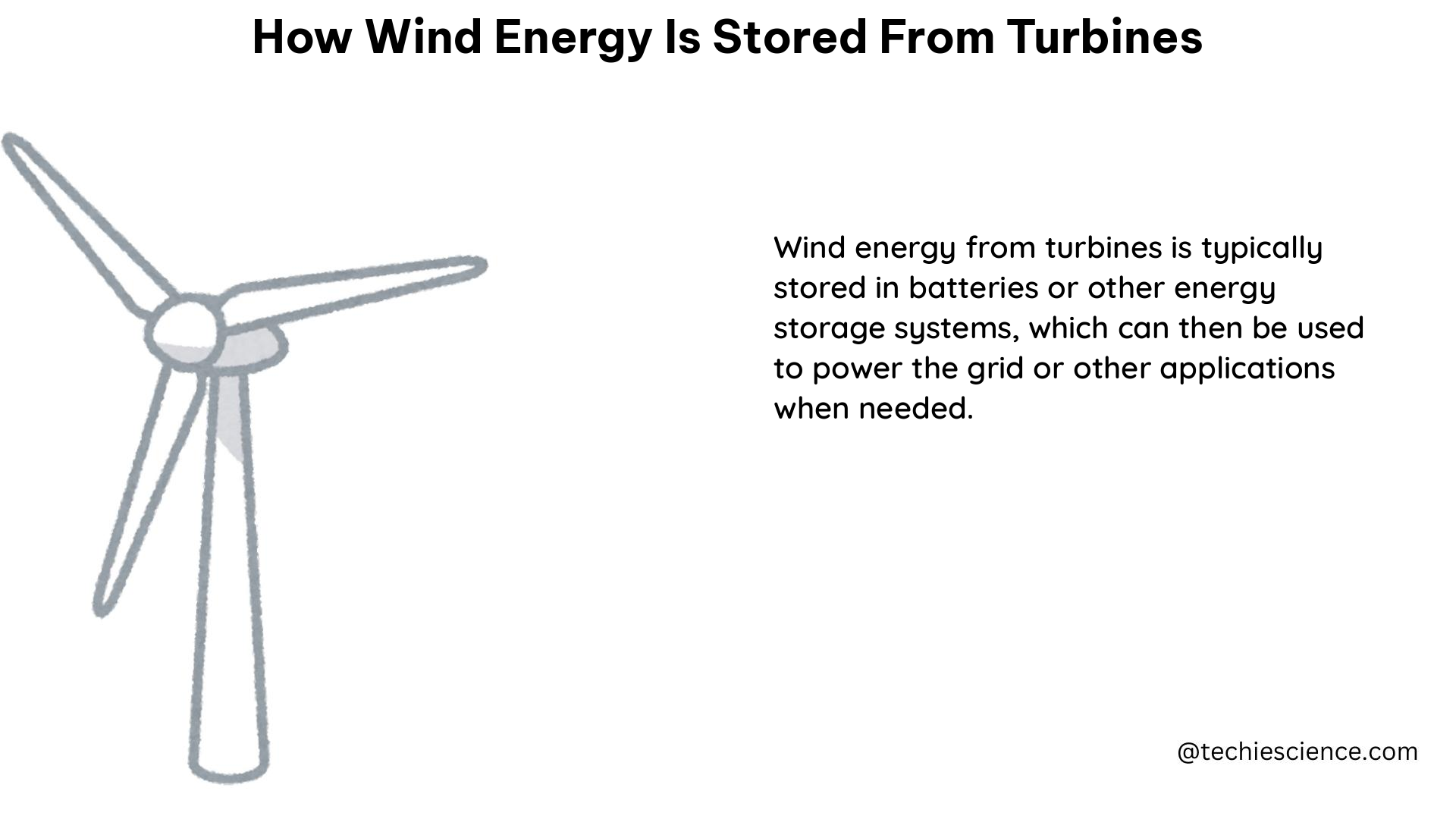Wind energy is a rapidly growing renewable energy source, and the efficient storage of the generated electricity is crucial for its widespread adoption. This comprehensive guide delves into the various methods used to store wind energy from turbines, providing in-depth technical details and quantifiable data to help you understand the intricacies of this process.
Battery Storage Systems: The Versatile Solution
Battery storage systems have emerged as a popular and versatile solution for storing excess energy generated by wind turbines. These systems efficiently store the surplus electricity in batteries for later use, with capacities ranging from 96kWh for telecom systems to up to 100+MWh for industrial applications.
Lithium-ion Batteries: The Frontrunner
Lithium-ion batteries are the most widely used battery technology in wind energy storage systems. These batteries offer high energy density, long lifespan, and impressive efficiency, with up to 95% round-trip efficiency. A techno-economic analysis conducted in the far-eastern region revealed that lithium-ion batteries had the lowest levelized cost of energy storage (LCOES) at $212/MWh.
Flow Batteries: Scalable and Long-lasting
Flow batteries, such as vanadium redox and zinc-bromine batteries, are another promising technology for wind energy storage. These batteries offer scalable storage capacity, long lifespans (up to 20 years), and high efficiency, with round-trip efficiencies ranging from 65% to 85%. The LCOES of flow batteries was found to be $250/MWh in the far-eastern region study.
Sodium-sulfur Batteries: High-temperature Performance
Sodium-sulfur (NaS) batteries are a high-temperature battery technology that can be well-suited for wind energy storage applications. These batteries operate at temperatures between 300°C and 350°C, offering high energy density, long lifespan (up to 15 years), and efficiency up to 80%. NaS batteries are particularly useful in large-scale, grid-connected wind energy storage systems.
Pumped Hydro Storage: The Mature Technology

Pumped hydro storage is a well-established technology for storing wind energy. This method involves pumping water to a higher elevation during periods of low electricity demand and then releasing the water through turbines to generate electricity when demand is high. The global pumped hydro storage capacity is around 150 GW, with an efficiency of 70-80% and a lifespan of 50-80 years.
Advantages of Pumped Hydro Storage
- High energy storage capacity: Pumped hydro storage systems can store large amounts of energy, making them suitable for utility-scale wind energy storage.
- Long lifespan: With a lifespan of 50-80 years, pumped hydro storage systems offer a reliable and long-term solution for wind energy storage.
- Flexibility: Pumped hydro storage can quickly respond to changes in electricity demand, making it a valuable asset in grid-scale wind energy integration.
Compressed Air Energy Storage: The Underground Solution
Compressed air energy storage (CAES) systems store energy by compressing air and storing it underground in caverns or containers. During periods of high electricity demand, the compressed air is released, heated, and expanded through turbines to generate electricity.
CAES Efficiency and Capacity
The global compressed air energy storage capacity is around 400 MW, with an efficiency of 50-70% and a lifespan of 20-40 years. While the efficiency of CAES systems is lower than that of battery storage or pumped hydro, they offer the advantage of long-term energy storage and the ability to utilize underground geological formations for storage.
Hybrid CAES Systems
To improve the efficiency of CAES systems, hybrid configurations have been developed that combine CAES with other technologies, such as thermal energy storage or renewable energy sources. These hybrid systems can achieve higher round-trip efficiencies, typically in the range of 70-80%.
Techno-economic Comparison of Energy Storage Technologies
A techno-economic analysis conducted in the far-eastern region provided valuable insights into the comparative performance of different energy storage technologies for wind energy applications. The study found that:
| Technology | Levelized Cost of Energy Storage (LCOES) |
|---|---|
| Lithium-ion Batteries | $212/MWh |
| Flow Batteries | $250/MWh |
| Pumped Hydro Storage | $268/MWh |
This data highlights the cost-competitiveness of lithium-ion batteries, making them a preferred choice for wind energy storage in the region. However, the selection of the most suitable technology will depend on various factors, such as site-specific conditions, energy storage requirements, and long-term operational considerations.
Conclusion
The storage of wind energy from turbines is a critical component in the widespread adoption of this renewable energy source. This comprehensive guide has explored the three main methods – battery storage systems, pumped hydro storage, and compressed air energy storage – providing in-depth technical details and quantifiable data to help you understand the intricacies of each approach. By understanding the strengths and limitations of these technologies, you can make informed decisions on the most suitable wind energy storage solution for your specific needs.
References:
- Vidya Amarapala, Abdul Salam K. Darwish, Peter Farrell, “Storage of wind power energy: main facts and feasibility − hydrogen as an option”, Renew. Energy Environ. Sustain. 8, 16 (2023)
- Bera, “Quantification of storage required for preserving frequency security in wind‐integrated systems”, IET Renewable Power Generation (2023)
- Universal Technical Institute, “How Do Wind Turbines Store Energy?” (2024)
- Ampowr, “Energy Storage Systems for Wind Turbines” (2023)
- Kim Dong Kyu, Rho Kyu Heon, Na Youngseung, Kim Minsung, “Evaluation of energy storage technologies for efficient usage of wind power in the far-eastern region: A techno-economic analysis” (2021)

The lambdageeks.com Core SME Team is a group of experienced subject matter experts from diverse scientific and technical fields including Physics, Chemistry, Technology,Electronics & Electrical Engineering, Automotive, Mechanical Engineering. Our team collaborates to create high-quality, well-researched articles on a wide range of science and technology topics for the lambdageeks.com website.
All Our Senior SME are having more than 7 Years of experience in the respective fields . They are either Working Industry Professionals or assocaited With different Universities. Refer Our Authors Page to get to know About our Core SMEs.